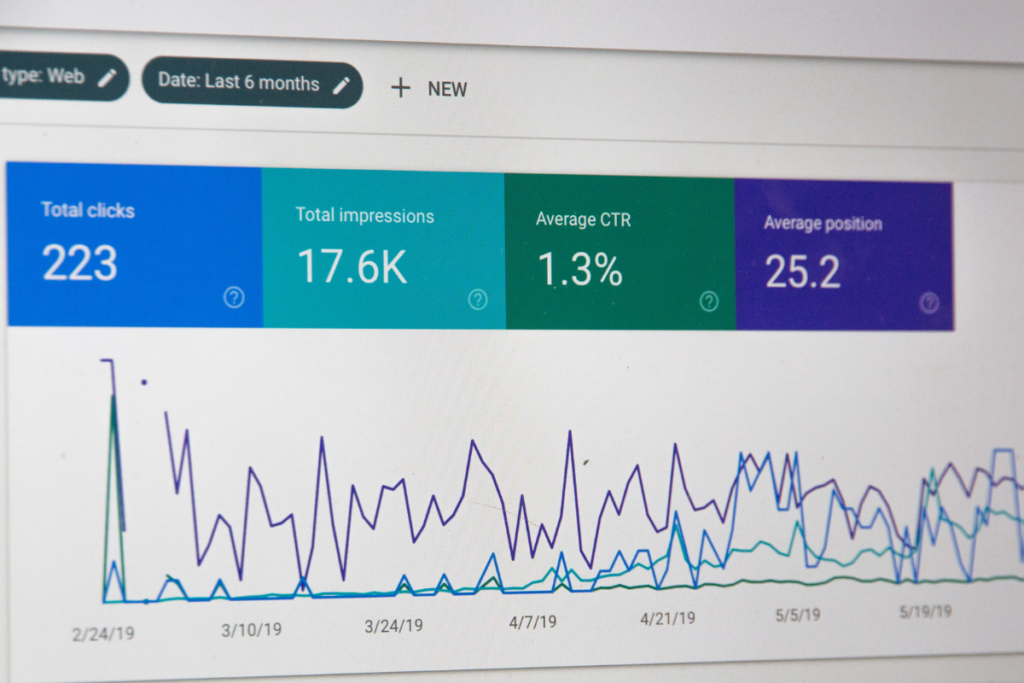Search Engine Optimization (SEO) is sometimes like navigating a maze— especially when considering long-tail keywords vs. short-tail.
Keywords, in all their varied forms, are vital for securing your spot on the first page of Google. Choosing between long-tail and short-tail keywords is central to shaping your SEO trajectory.
In this detailed guide, we’ll highlight the distinctions between long-tail and short-tail keywords so you can create a strategy comprising both.
By the end of this article, you should be able to identify both types of keywords, their volume, competition, user intent, and more.
Let’s get started!
What Are Long-Tail Keywords?
Long-tail keywords typically encompass three or more words used together to represent a specific query or browsing intent.
A golden example of long-tail keywords would be “women’s leather ankle boots size 5” rather than simply searching for “boots.” When someone adds a few additional words to their search, they will likely convert faster than a short-tail keyword because it’s specific.
Long-Tail Keyword Examples
Understanding this concept better often calls for real-life examples:
- Rather than search for “best restaurants,” someone might opt for “best Italian restaurants near the Chicago theater district.”
- Searching for something like “science fiction books by Isaac Asimov” instead of simply looking up “science fiction books.”
- Choosing specifics like “how to plant tomatoes from seeds step by step” instead of general searches such as “planting vegetables.”
These examples demonstrate the comprehensive, targeted search potential of long-tail keywords. As such, they can serve businesses keen to hone in on precise segments and target specific demographics.

What Are Short-Tail Keywords?
Short-tail keywords consist of one or two words, hence their alternative name: head keywords or primary keywords. These are typically broad terms with high search volume but equally significant competition.
For instance, a Google search for “coffee” is a short-tail keyword. It’s general and has thousands, if not millions, of potential people searching for it. However, because it’s so non-specific, results might range from nearby coffee shops to articles about coffee’s health benefits or cultural history.
Ranking for these head keywords can often be challenging since large corporations with substantial SEO budgets typically dominate them. Nevertheless, when successful, driving traffic using these high-volume short-tail keywords can significantly boost your visibility online.
Short-Tail Keyword Examples
To drive this point home, let’s look at some everyday examples of short-tail keywords:
- “Flowers”
- “Books”
- “Shoes”
Such generic search terms generate various search results due to their non-specific nature. For example, a user searching “shoes” will yield numerous listings from different shoe retailers and news articles about shoes or fashion blogs focusing on current footwear trends.
Therefore, understanding the short-tail vs. long-tail debate in an SEO strategy is crucial, as both have unique merits and limitations.

Volume and Competition — Long Tail vs. Short Tail Keywords
The success of your SEO strategy largely depends on the type of keywords you choose to target—whether they’re long-tail or short-tail keywords. Each comes with its advantages and challenges regarding volume and competition.
Essentially, ‘volume’ refers to the number of searches a particular keyword generates within a given period (usually monthly). At the same time, ‘competition’ pertains to how many other sites are vying for rankings using the same keyword.
Search Volume: A Double-Edged Sword
When we talk about short-tail keywords (or “head”), their high search volume first comes to mind. There’s no denying their popularity; they’re widely searched for because they encompass broad topics. Examples can be single words like “pizza” or “shoes”. However, such universality is a double-edged sword.
On the one hand, targeting these head keywords provides you with an immense potential audience, reaching millions around the globe. On the flip side, remember everyone else has noticed this popularity, too – it means fierce competition.
Conversely, there’s less search volume when considering long-tail keywords, but it’s not necessarily a drawback. These phrases may initially appear to provide lesser traffic due to their specificity (for example: “gluten-free vegan pizza in Brooklyn”). However, keep lower numbers from deterring you – this lack of search volume often indicates considerably less competition!
Minimizing Competition: The Unseen Battlefront
Intuitively enough, shorter and more generic phrases attract higher competition levels. Countless websites need help with the same limited pool of keywords. Yet don’t underestimate niche markets fostered by descriptive long-tail terms – those offering unique, detailed solutions for specific user needs.
Moreover, businesses are likely to rank higher with long-tail keyword usage in their content despite having smaller search volumes.
The choice between volume and competition – between long and short-tail keywords is never cut-and-dried but context-dependent and strategy-specific. It’s all about achieving a balance that maximizes visibility without spreading your resources too thin.

User Intent — Long-Tail Keywords vs. Short-Tail
Starting with the basics, user intent stands for what an individual aims to find or achieve by searching on Google or any other search engine. Understanding this concept can drastically revolutionize your view of long-tail keywords vs. short-tail tail.
Now, let’s dig into how short and long-tail keywords relate to the concept of user intent in SEO.
Short-Tail Keywords and User Intent
Short tail keywords usually contain one or two words, such as “chocolate cake.” They are vague and have a high volume in terms of searches. This means they generate a lot of traffic, but the specific intent behind these users’ searches is often more brutal to pinpoint accurately.
When someone types in a short-tail keyword, it indicates broad user intent because it offers little insight into what they are looking for; could they be seeking recipes? Or they may want to purchase from a bakery near them.
On its own, these provide little opportunity for content creation catered particularly toward meeting a specific need.
Long-Tail Keywords and User Intent
Conversely, things get more intriguing when we venture into long-tail keywords territory. It’s important to remember that these longer key phrases typically have less search volume when talking about long tail vs. short tail.
But wait to jump ship! Less competition could benefit your site immensely. Here’s why: The specificity in long-tailed keywords gives us actionable insight into the searcher’s intent. An example would be the “best dark chocolate cake recipe.”
This keyword gets significantly fewer hits than “chocolate cake,” but you know what the person wants; they’re not only searching for a recipe—they desire the ‘best.’ They aren’t just interested in chocolate cake—they specifically wish to ‘dark chocolate.’
Having established this connection between long-tail keywords and user intent, you have a solid base for creating the ideal content that will engage them and cater to their needs.
Just imagine how thrilled our ‘dark chocolate’ connoisseurs would feel if they stumbled upon an article titled ‘The Best Dark Chocolate Cake Recipe You’ll Ever Taste!’
Long-Tail Keywords vs. Short-Tail: User Intent Recap
Deciding between long-tail keywords and short-tail keywords from a perspective of user intent boils down to this:
- Short-tail or head keywords bring in high traffic volume with unspecific user intentions.
- Long-tail keywords establish a definitive connection to the searcher’s precise needs, even though they attract less traffic overall.
In essence, finding the right balance between these two can significantly increase your chances of attracting and engaging users.

Conversion Rates — Short-Tail vs. Long-Tail Keywords
Intuitively, you may lean towards broad reach and large volume. Yet, regarding conversion rates, the true winner could be long-tail keywords.
The Power of Specificity
Long-tail keywords, being more specific and targeted than their short-tail counterparts, offer a fascinating advantage: precision targeting.
Users who apply particular phrases in their searches typically know what they’re after. That specificity correlates with a greater readiness to purchase or carry out some form of conversion.
Just imagine this scenario: an online shopper isn’t likely to search for ‘shoes’ when ready to purchase. Instead, they might use long-tail keywords like ‘black leather running shoe size 7’, showing clear buying intent.
Reliance on Detail Orientation
Short-tail and long-tail keywords differ when it comes to the level of detail orientation.
Short-tail keywords are generic and attract a wider audience but may not directly lead to conversions. On the contrary, long-tail SEO leverages these intricate details, resulting in a willingness to take action.
For instance, someone searching for a ‘red ceramic vase’ (a long-tail keyword) is presumably more likely to purchase than someone who types in a ‘vase’ (using a short keyword).
How to Find Short and Long-Tail Keywords
Finding these keywords might seem like an uphill task, but various tools and methods are available that simplify the process.
One noteworthy tool is AnswerThePublic. As a freemium offering, it taps into users’ genuine queries. After entering a primary keyword, you’re presented with related questions from across the web, most of which are excellent long-tail keyword examples.
For insights into currently trending search terms, Google Auto Suggest and People Also Asked. These sections provide a pulse on popular searches associated with both short and long-tail keywords.
Additionally, leveraging competitor research is invaluable. Platforms like SEMrush and Ahrefs display keywords your industry counterparts are ranking for, providing a rich source for short-tail and long-tail keyword ideas.
Remember, merely identifying the right keywords isn’t enough; understanding the context in which they’re best employed is crucial, where discerning user intent becomes vital.
Keyword research is both an art and a science, critical for directing targeted traffic to your site. While it’s a process that demands time and patience, the results will be well worth the effort.

Balancing Short Tail and Long Tail Keywords
Integrating long-tail and short-tail keywords into your strategy is essential. These keywords support each other and form the backbone for attracting organic traffic.
Think of it as a balancing act. Short-tail keywords offer high volume and competitiveness, while long-tail keywords often result in conversions.
For instance:
- You could use “SEO” as a primary keyword to generate general interest.
- Then, dig deeper with long-tail phrases like “Essential steps for effective SEO.”
This two-pronged approach boosts brand visibility among novices and offers actionable insights to those more familiar with the topic.
When balancing long-tail and short-tail keywords, consider the following:
- Know Your Audience: Let user intent guide your keyword choices.
- Use them Strategically: Use short-tail keywords for general contexts and delve deeper into specifics using long-tail phrases.
- Apply Regular Updates: Given the evolving nature of online trends, keeping your keyword strategy current is vital.
While achieving this harmony might seem challenging initially, understanding the nuances of both keyword types transforms it into a compelling strategic endeavor.
Like any effective plan, striking this balance demands ongoing experimentation and adaptation to cater to the fluid preferences of your digital audience.
Conclusion
When exploring long-tail and short-tail keywords, both hold distinct advantages in SEO.
While short-tail keywords boost site visibility with their vast search volume, they face more competition and ambiguous user intent.
Conversely, although niche, long-tail keywords signal more precise buyer intent and can lead to higher conversions. The key is strategically balancing them based on your objectives.
For optimal SEO, it’s crucial to harmonize various strategies, with mastering the keyword blend being paramount for top rankings.




![Featured Image - Mental Health Content Writing [Best Practices and Ethical Considerations]](https://trioseo.com/wp-content/uploads/2024/05/Mental-Health-Content-Writing-Best-Practices-and-Ethical-Considerations-300x157.png)
![Featured Image - Beginner’s Guide to CBD Content Writing [Tips Included]](https://trioseo.com/wp-content/uploads/2024/05/Beginners-Guide-to-CBD-Content-Writing-Tips-Included-300x157.png)

![Featured Image - [Ultimate Guide] SEO For Tech Companies That Outranks Competitors](https://trioseo.com/wp-content/uploads/2024/04/Ultimate-Guide-SEO-For-Tech-Companies-That-Outranks-Competitors-300x157.png)

![Featured Image - B2B SaaS SEO - Ultimate Guide [Strategy Included]](https://trioseo.com/wp-content/uploads/2024/04/B2B-SaaS-SEO-Ultimate-Guide-Strategy-Included-300x157.png)

